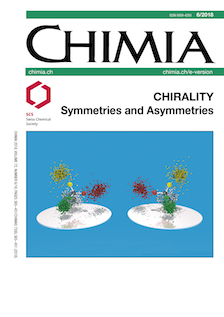Optical Chiral Induced Spin Selectivity XMCD Study
DOI:
https://doi.org/10.2533/chimia.2018.379Keywords:
Chiral induced spin selectivity, Magnetic chiral dichroism, Quantum dots, SpintronicsAbstract
The chiral induced spin selectivity (CISS) effect in which selective transport of electron spins through helical chiral molecules occurs, has attracted a lot of attention in recent years. This effect was used to magnetize ferromagnetic (FM) samples by utilizing adsorbed chiral molecules. The electron transfer through the molecules was generated optically or electrically. In the optical configuration, circularly polarized light induced efficient magnetization by spin torque transfer (STT), using a hybrid of quantum dots (QDs) and chiral molecule self-assembled monolayer (SAM). Here, we use X-ray magnetic chiral dichroism (XMCD) spectroscopy in order to probe the optically induced magnetization on thin FM films. The results show differences in the FM magnetization depending on the optical circular polarization, matching previous non-local Hall probe measurements.Downloads
Published
2018-06-27
Issue
Section
Scientific Articles
License
Copyright (c) 2018 Swiss Chemical Society

This work is licensed under a Creative Commons Attribution-NonCommercial 4.0 International License.
How to Cite
[1]
O. B. Dor, S. Yochelis, H. Ohldag, Y. Paltiel, Chimia 2018, 72, 379, DOI: 10.2533/chimia.2018.379.







